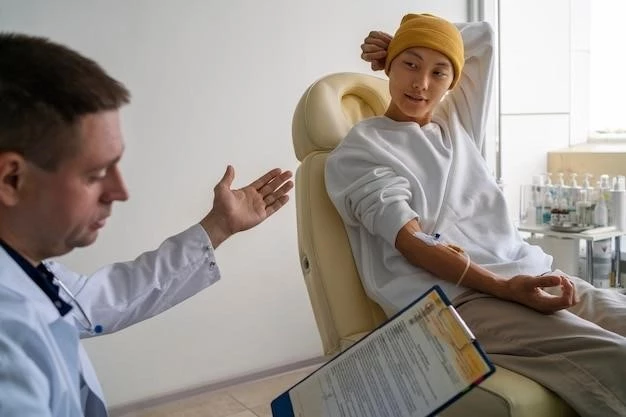Overview of Myoclonus Ataxia
Syndromes that combine dystonia and parkinsonism, dystonia and myoclonus, and dystonia and ataxia have been extensively reviewed. The combination of myoclonus and ataxia can be the manifestation of various diseases.
The combination of myoclonus and ataxia can be the manifestation of various diseases. Progressive myoclonus ataxia (PMA) is a rare disorder characterized by a decline in cognitive functions and occasional epileptic seizures. Opsoclonus-myoclonus-ataxia syndrome (OMAS) is another rare condition involving eye movement disorders and myoclonus, often associated with immune-mediated and paraneoplastic factors.

Progressive Myoclonus Ataxia (PMA)
Progressive myoclonus ataxia (PMA) is a rare disorder characterized by the progressive onset of ataxia and myoclonus, sometimes accompanied by epileptic seizures. The condition was historically known as Ramsay Hunt syndrome and can be either acquired or genetic in nature.
Definition and Rarity
The combination of myoclonus and ataxia can be found in various diseases. Progressive myoclonus ataxia (PMA) is a rare disorder characterized by a decline in cognitive functions and occasional epileptic seizures. Opsoclonus-myoclonus-ataxia syndrome (OMAS) is another rare condition involving eye movement disorders and myoclonus, often linked to immune-mediated and paraneoplastic factors.
Clinical Presentation and Symptoms
Patients with progressive myoclonus ataxia (PMA) typically exhibit a gradual onset of ataxia and myoclonus, which may be accompanied by infrequent epileptic seizures. The clinical presentation often involves progressive coordination difficulties and involuntary muscle jerks, impacting daily activities and quality of life. The symptoms may vary in severity and can pose diagnostic challenges due to overlapping features with other neurological conditions.

Opsoclonus-Myoclonus-Ataxia Syndrome (OMAS)
Opsoclonus-myoclonus-ataxia syndrome (OMAS) is a rare disorder of the nervous system characterized by a combination of eye movement disorders, myoclonus, and ataxia. Immunological factors are key, with potential associations to paraneoplastic conditions, especially neuroblastoma.
Characteristics and Diagnosis
Opsoclonus-myoclonus-ataxia syndrome (OMAS) is a complex neurological disorder characterized by a distinctive combination of symptoms, including irregular eye movements (opsoclonus), sudden muscle jerks (myoclonus), and impaired coordination (ataxia). Diagnosis of OMAS typically involves a thorough clinical evaluation, detailed neurological examination, and may require specialized tests to identify immune-mediated factors and potential paraneoplastic associations.
Immune-Mediated Nature and Paraneoplastic Associations
Opsoclonus-myoclonus-ataxia syndrome (OMAS) is recognized as an immune-mediated disorder, with strong associations to paraneoplastic conditions, particularly neuroblastoma. The immune system’s role in OMAS pathogenesis underscores the importance of considering both autoimmune mechanisms and potential malignancies in the comprehensive management of patients presenting with this syndrome.
Etiology and Causes of Myoclonus Ataxia
The combination of myoclonus and ataxia can be the manifestation of various acquired entities and associated diseases. One of the main entities linked to this combination is opsoclonus-myoclonus-ataxia syndrome (OMAS), often characterized by immune-mediated factors and potential paraneoplastic associations related to neuroblastoma.
Genetic Factors
Myoclonus ataxia syndromes (MAS) can be genetically influenced, with an increasing number of genes associated with these conditions. Recent advancements in genetic techniques have allowed for a better understanding of the genetic underpinnings of MAS, emphasizing the importance of precise etiological diagnosis for appropriate management and prognosis.
Acquired Entities and Associated Diseases
Acquired entities associated with myoclonus ataxia include opsoclonus-myoclonus-ataxia syndrome (OMAS), celiac disease, multiple system atrophy, and sporadic prion diseases. Recognizing and managing these conditions can significantly impact the clinical outcome and quality of life for individuals affected by myoclonus ataxia.
Clinical Manifestations of Myoclonus Ataxia
Patients with myoclonus ataxia may present with a variety of symptoms, including irregular eye movements (opsoclonus), sudden muscle jerks (myoclonus), and difficulties in coordination (ataxia). These manifestations can significantly impact daily activities and require a thorough diagnostic evaluation for appropriate management.
Symptomatology and Presentation
Patients with myoclonus ataxia may present with a combination of symptoms including involuntary muscle jerks (myoclonus), impaired coordination (ataxia), and irregular eye movements (opsoclonus). These manifestations can significantly impact daily functioning and require a comprehensive assessment for accurate diagnosis and management.
Diagnostic Challenges and Differential Diagnosis
Diagnosing myoclonus ataxia can be challenging due to the overlapping symptoms with various other neurological disorders. Differential diagnosis may include conditions such as epilepsy, multiple system atrophy, and prion diseases. A comprehensive evaluation combining clinical assessment, advanced imaging studies, and sometimes genetic testing is crucial to accurately differentiate myoclonus ataxia from other similar conditions.
Treatment Approaches for Myoclonus Ataxia
Therapeutic strategies for myoclonus ataxia focus on symptom management and improving quality of life. In clinical practice, a combination of pharmacological interventions, rehabilitation programs, and supportive care is often employed to address the diverse range of symptoms associated with this condition.
Therapeutic Strategies and Management
Managing myoclonus ataxia involves a multifaceted approach encompassing various therapeutic strategies tailored to address symptomatology and enhance overall well-being. The management typically includes a combination of pharmacological interventions, rehabilitative measures, and ongoing support to optimize patient outcomes and tackle the complex clinical manifestations of the condition.
Pharmacological Interventions and Rehabilitation
Pharmacological interventions play a vital role in managing myoclonus ataxia, targeting symptoms like myoclonus, ataxia, and associated issues. Additionally, rehabilitation programs are crucial to improve motor function, coordination, and overall quality of life for individuals affected by myoclonus ataxia.
Prognosis and Long-Term Outlook
Impact on quality of life and disease progression are significant concerns in myoclonus ataxia. Understanding the long-term outlook and potential complications is crucial for comprehensive management and patient care.
Impact on Quality of Life
Myoclonus ataxia can have a substantial impact on the quality of life, affecting daily activities, coordination, and overall well-being. Managing the symptoms and addressing the challenges posed by the condition are essential to improving the quality of life for individuals living with myoclonus ataxia.
Disease Progression and Complications
The progression of myoclonus ataxia and associated complications can greatly impact the prognosis and quality of life for affected individuals. Understanding the disease trajectory and potential complications is essential for effective long-term management and care.
Research Advances in Myoclonus Ataxia
Recent studies have shed light on the genetic underpinnings of myoclonus ataxia, emphasizing the increasing number of genes associated with this condition. Understanding these genetic factors is crucial for advancements in both diagnosis and personalized treatment approaches.
Recent Studies and Findings
Recent studies have emphasized the genetic aspects of myoclonus ataxia syndromes, with an increasing number of genes implicated in the condition. Understanding the genetic basis of these syndromes is crucial for enhancing diagnostic accuracy and developing targeted treatment strategies.
Future Directions in Understanding the Disease
Advancing knowledge of the genetic underpinnings of myoclonus ataxia will pave the way for personalized treatments and precise management strategies. Future research efforts aim to delve deeper into the disease mechanisms, potentially uncovering novel therapeutic targets and enhancing patient outcomes in the field of myoclonus ataxia.
Conclusion
Myoclonus ataxia is a complex neurological condition that presents a myriad of challenges in diagnosis and management. Recent advancements in understanding the genetic factors underlying the disease offer hope for more targeted treatments and improved outcomes. Moving forward, continued research efforts are essential to unraveling the complexities of myoclonus ataxia and enhancing patient care.
